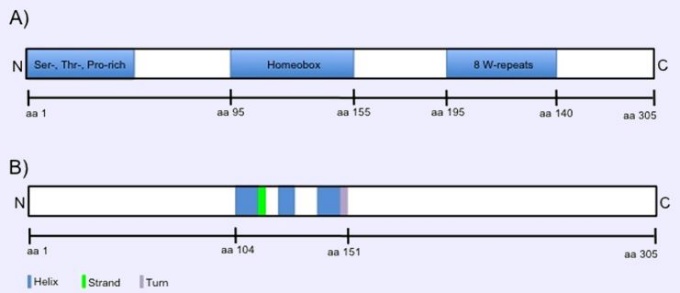Role of NANOG in Improving Function After Peripheral Nerve Injury

Graphical illustration of the NANOG protein sequence (A) and secondary structure motifs of the NANOG protein (B).
Principal Investigator: Kirkwood Personius, PT, PhD
Sponsor: University at Buffalo's CTSI Translational Pilot Studies Program
Awarded: January 2021
Abstract: The goal of this project is to develop preliminary results determining whether expression of NANOG in muscle improves innervation of muscle following peripheral nerve injury. We planned to use a transgenic line of mice (Col1a1-tetOP-Nanog) where doxycycline administration induces ectopic expression of NANOG in all tissues of the body.
Since the project required NANOG expression specifically in muscle, we proposed to surgically implant a slow-release polymer embedded with doxycycline subcutaneously in one hindlimb of a transgenic line of mice. This slow-release polymer approach has the advantage of using currently available transgenic mice but suffers from inducing NANOG expression only in a subset of muscles and requiring surgery for implantation and removal of the polymer. A better model would be a transgenic mouse where NANOG expression was induced only in skeletal muscle (i.e. skeletal muscle-specific NANOG mouse) through administration of doxycycline in drinking water.
We propose to develop this new transgenic mouse model that will be more clinically relevant and thus more readily funded by agencies such as NIH and DOD. Furthermore, these skeletal muscle-specific NANOG mice have the potential for translational studies in multiple neuromuscular diseases (i.e. Duchenne muscular dystrophy, amyotrophic lateral sclerosis, and spinal muscular atrophy).